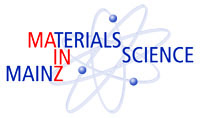


Physikalisches Kolloquium
May 21, 2013 at
5 p.m. c.t.
in
Hörsaal des Instituts für Kernphysik, Becherweg 45
Prof. Dr. Friederike Schmid
Institut für Physik
friederike.schmid@uni-mainz.de
Prof. Dr. Hartmut Wittig
Institut für Kernphysik
hartmut.wittig@uni-mainz.de
Colliding galaxies: Cosmic fireworks
Prof. Dr. Henny J.G.L.M. Lamers (Astronomical Institute Anton Pannekoek, University of Amsterdam)
Almost all galaxies are part of clusters containing tens to thousands of members. They move with speeds of several hundred km/s with respect to one another. Our own galaxy is part of the “local group” which contains a few dozen members.
Due to the large sizes of the galaxies and their clustering properties collisions and nearcollisions occur frequently: galaxy-galaxy interactions seem to be more rule than exception. Our own galaxy has “cannibalized” several smaller galaxies, of which the remnants can be traced, and is presently hit by a very small galaxy.
The Hubble Space Telescope has observed many colliding or interacting galaxies.
The strong gravitational interaction results in a range of fascinating features: bridges, tails, and spiral arms, usually accompanied by bursts of star formation.
I will show spectacular images of (nearly)-colliding and merging galaxies to demonstrate the bewildering range of properties. I will then explain the processes that produce these main observed features. Movies of numerical simulations help us to understand the physical processes and the history of collisions.
I will also discuss one particular interacting galaxy system, “the Whirlpool system” as an example to show how a galaxy reacts to a close encounter.
Very deep images have shown that about 1 billion years after the Big Bang the vast majority of the galaxies were small and irregular in shape. These are the building blocks of the large galaxies, like our Milky Way, that we see today in the local Universe.
In a rare instance we can see the merging of large groups of galaxies.
The Hubble Space Telescope has observed many colliding or interacting galaxies.
The strong gravitational interaction results in a range of fascinating features: bridges, tails, and spiral arms, usually accompanied by bursts of star formation.
I will show spectacular images of (nearly)-colliding and merging galaxies to demonstrate the bewildering range of properties. I will then explain the processes that produce these main observed features. Movies of numerical simulations help us to understand the physical processes and the history of collisions.
I will also discuss one particular interacting galaxy system, “the Whirlpool system” as an example to show how a galaxy reacts to a close encounter.
Very deep images have shown that about 1 billion years after the Big Bang the vast majority of the galaxies were small and irregular in shape. These are the building blocks of the large galaxies, like our Milky Way, that we see today in the local Universe.
In a rare instance we can see the merging of large groups of galaxies.